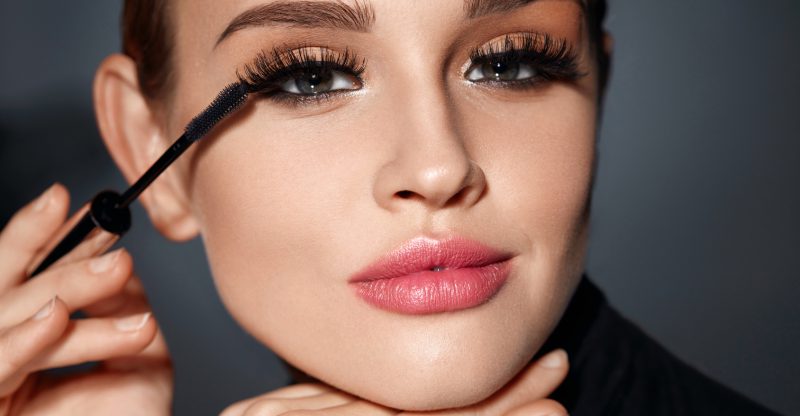When Was the First Mascara Made? Mascara – in the Past & Today
Mascara is one of the most popular makeup products among women. There are females who never use a foundation or lip gloss but their lashes are always covered with a black pigment. What was a mascara composed of in the past and what was the purpose of using it? When was it first sold?
Mascara in the past – what was it used for?
Mascara is not an invention of the 21st or even 20th century. Already ancient Egyptians colored their lashes – both men and women. Why? Because apart from being a beauty treatment, coating lashes and brows with pigment would protect them against evil powers, strong sunlight and dust in the wind.
Mascara in the past – composition
Ancient mascara contained substances which were much different from the composition of today’s products. Khol would be the most common coloring substance used that time. It was made through mixing charcoal dust, honey, water and the crocodile’s dung. The recipe of other mascaras was based on soot diluted with olive and protein or mixed with kohl (including charcoal and malachite). All of the formulas come from ancient Egyptians but other ancient civilizations – Greeks and Romans – followed their examples.
The mascara lost its popularity in the Middle Ages but it regained its status under Queen Victoria’s rule in the 19th century. Why it took the mascara so long to ‘recover’? That was the time when women would devote a few hours a day to applying makeup, dreaming of long, dark lashes which became the attribute of femininity. Despite immense popularity in the Victorian times, it was not available for sale. Resourceful women made mascaras themselves in the privacy of their homes and following their own recipes.
Mascaras are launched
The first mascara to be sold was based on vaseline produced eight years before a French perfumer Eugene Rimmel made Superfin mascara. Apart from the vaseline, Rimmel mascara contained coal dust which would smudge the eye skin area. No wonder Rimmel strived for perfecting the recipe of his invention. Eventually, he designed a cake mascara around 1917. The product was available with an attached brush which needed dampening (e.g. through spitting on it) before use. Using saliva to wet the brush got so popular that the mascara was sometimes known as ‘spit black’. Rimmel got so renowned after creating the product that the word ‘rimmel’ means mascara in some languages.
The first waterproof mascara
While Rimmel was selling his original mascara in Europe, a New York chemist T. L. Williams designed a competitive formula (specially for his sister Mabel). The mascara he made was supposed help her win the heart of the man she was loving unrequitedly. And that was how Maybell Laboratories was set up, evolving to Maybelline later on. The mascara that Williams suggested gained enormous popularity in the US – it was partly thanks to an affordable price. Too bad, it wasn’t flawless. It failed to give a long-wear effect, which made it unsuitable for professional use e.g. on a movie set. Therefore, Maybelline mascara didn’t live up to the expectations of silent film actresses who were seeking an infallible product. Luckily, the ideal was created by a Hollywood Max Factor makeup artist and called ‘Cosmetic’. His mascara had a form of a small, hard roller. In order to spread the product on lashes, you had to rip a bit of the roller off and melt it near the fire. In practice, you covered lashes with a fluid mascara which hardened, leaving both dramatic and long-lasting effect. Even though Cosmetic looked incredible on the big screen, it didn’t work for a daily look. The Max Factor invention was called the first waterproof mascara. Regrettably, due to an excess of turpentine, it wasn’t skin or eye-friendly. To make things worse, you had to put lots of effort to take it off. Luckily, at the end of the 1950s, the first safe waterproof formula was made.
The first modern mascara
Helena Rubinstein takes credit for another milestone in the history of mascaras. She encased Mascara-Matic in a metal pen-size tube in 1958. The packaging was equipped with a small metal rod for application. Finally, applying mascaras to lashes became an easy and precise activity. Two years later, Maybelline launched waterproof Ultra Lash Mascara with a spiral nylon-bristle brush.
The creators and manufacturers of mascaras keep searching for new, better formulas and recipes. At the turn of the 20th and 21st century, cosmetic brands competed for the best ideas while creating lengthening and curling mascaras. In order to get the effect, they experimented with the ingredients of mascaras, as well as the shape and material of brushes. Today, store shelves are heavy with various lash-extending and volumizing mascaras whereas manufacturers keep seeking other interesting solutions.

